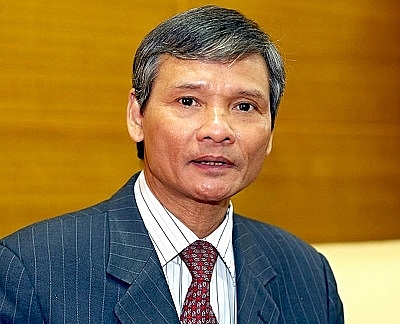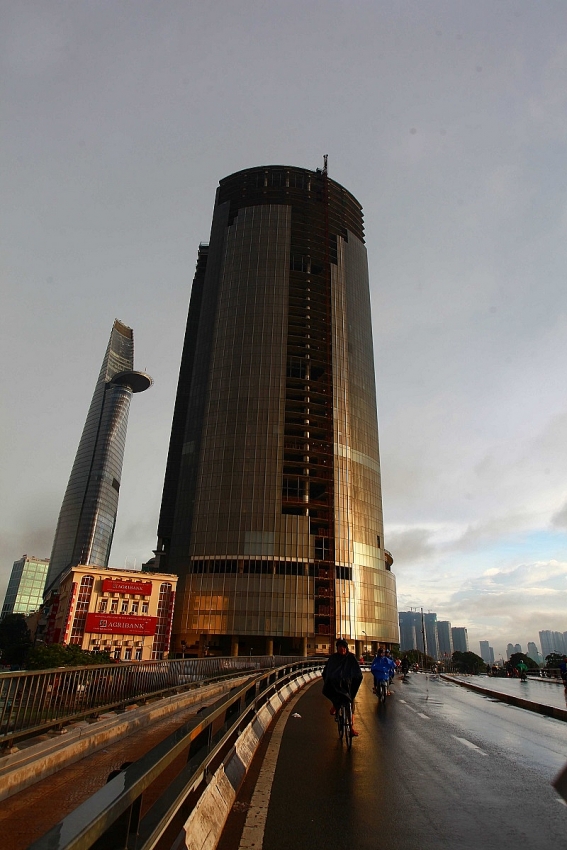Abundant credit supply for real estate projects
Real estate continues to record strong growth
 |
| Truong Van Phuoc - Acting chairman, National Financial Supervision Council |
According to the latest figures from the General Statistics Office, the real estate sector grew by 4.07 per cent in 2017, contributing 0.21 per cent to Vietnam’s GDP expansion last year. The number of transactions showed a remarkable increase with 68,000 units changing hands. The market consumed 79 per cent of the available products, which was a good sign.
Thanks to vibrant transactions, inventories continued to decline in 2017, reducing by 17 per cent compared to 2016. The value of inventories stood at VND25.7 trillion ($1.1 billion). Market prices remained stable with a slight hike in the mid- and high-end segments. Discrepancies between supply and demand have been narrowed and developers switched focus to affordable products instead of luxurious buildings or premium resorts.
The real estate sector recorded good signs of recovery and attracted a significant amount of capital, especially from foreign investors. According to the Ministry of Planning and Investment, the total value of registered foreign direct investment (FDI) in real estate was $3.05 billion in 2017, taking up the third place among all industries and accounting for 8.5 per cent of all inbound capital to Vietnam. At the same time, about 22 per cent of inbound remittances flew to the real estate sector, equivalent to $2.5 billion every year.
Bank credit comes to the rescue
It is evident that strong signs of recovery have convinced many investors to pour capital into the real estate sector. However, the role of bank credit cannot be underestimated, as commercial lenders have provided the real estate sector with the largest amount of funding.
If we take a look at the property sector between 2015 and 2017, it is easy to see that commercial banks provide credit not only for developers (the supply side), but also homebuyers and investors (the demand side).
Credit growth in 2017 stood at 19 per cent, in which the expansion of real estate credit was 13 per cent. Real estate took up 15.8 per cent of the total outstanding credit, a slight decrease from 2016. The majority of credit flows to investments in industrial zones, manufacturing plants, tourism sites, hotels, and private homes.
When official credit into real estate was being squeezed, indirect capital still managed to find its way to this sector. It is easy to see that consumer credit is growing strong, a large percentage of which goes to individuals to buy new homes or refurbish their current ones.
In particular, consumer credit experienced a sudden burst of growth, increasing by 65 per cent in 2017 compared to 2016. The same happened in 2016, when consumer credit boomed by 50 per cent from 2015. By the end of 2017, consumer loans took up 18 per cent of total outstanding credit, half of which was for home purchases or refurbishments.
This trend is gaining a foothold around the world in recent years. Vietnam is still at the early stages of growth in terms of financial development—which explains why consumer credit only ballooned in the past two years.
All in all, we can see that although governmental policies may limit credit flows into real estate, capital will still find its way to this sector in one way or another, directly or indirectly. However, at the end of the day, banks remain the biggest providers of funding for the property sector.
 |
| Bank credit remains the main source of funding for real estate projects |
A bright outlook
On the other hand, the recovery of the real estate sector also exerted a positive impact on the chronic bad debt problem in Vietnam. Most of the loans in Vietnam are secured by some sort of properties, which is why a robust real estate sector is important to solve the issue of non-performing loans.
Last August, the National Assembly passed Resolution No.42/2017/QH14 which paved the way for commercial banks to foreclose collaterals when bad debt arises. Right after the bill took effect, Vietnam Asset Management Company (VAMC) seized Saigon One Tower in downtown Ho Chi Minh City. This project, which began construction in 2011, is now on sale to new investors. This move is the latest positive sign that banks can foreclose more collaterals when the debtor defaults on his payments. It is important to remember that most of the collaterals are real estate products located in prime locations at major cities.
As the land bank at major cities is getting smaller, this is a huge opportunity for real estate developers to carry out new projects. Mergers and acquisitions, project transfers, and other forms of collaborations will be more vibrant, partly thanks to Resolution 42. It is forecast that between 2018 and 2020, following Resolution 42, Vietnam’s credit institutions will manage to solve VND600 trillion ($26.5 billion) of bad debts, 70 per cent of which are secured by real estate. As a result, in the next three years, the real estate sector can welcome new opportunities from the foreclosure of these projects.
 |
| VAMC has seized Saigon One Tower as part of its foreclosure process, paving the way for solving bad debts |
2017 economic figures show that Vietnam is embarking on a new cycle of growth in 2018. Stable developments in the real estate and securities markets are crucial to attract long-term investments, both from Vietnamese and overseas investors alike.
In general, the outlook for the real estate sector is quite positive in the coming years, but the challenge remains the same: the market has to offer diversified products and services, ensure that capital flows into the right place and prevent another speculation bubble. The market has to draw lessons from the overheating ten years ago, which resulted in a crash with effects lingering to this day. Credit into real estate has to be steered in the right way and policymakers have to maintain a close check on this sector.
As we welcome 2018 with positive signs for Vietnam’s macroeconomics, financial and banking sector, and so on, we can reasonably expect good spillover effects in other sectors, most particularly real estate.
What the stars mean:
★ Poor ★ ★ Promising ★★★ Good ★★★★ Very good ★★★★★ Exceptional
Themes: Vietnam Property Outlook 2017
Related Contents
Latest News
More News
- Sun Group breaks ground on $2 billion Van Don casino complex (December 19, 2025 | 18:14)
- Rare, beautiful, sustainable: the mark of iconic real estate (December 19, 2025 | 08:00)
- Owner-occupied housing stabilises, paving the way for new growth cycle (December 18, 2025 | 17:04)
- Unlocking urban potential of smart cities (December 18, 2025 | 16:50)
- Green finance offers 'passport' for Vietnamese construction, building materials firms (December 15, 2025 | 08:00)
- Gamuda Land commit long-term investment (December 12, 2025 | 11:49)
- HITC ties up with Evolution to develop AI and hyperscale data centres in Vietnam (December 11, 2025 | 12:09)
- Real estate deals boom via high-profile names (December 08, 2025 | 11:32)
- Industrial segment shaped by M&As (December 08, 2025 | 08:00)
- The Privé sets the benchmark for luxury real estate (December 05, 2025 | 08:28)

 Tag:
Tag:




















 Mobile Version
Mobile Version